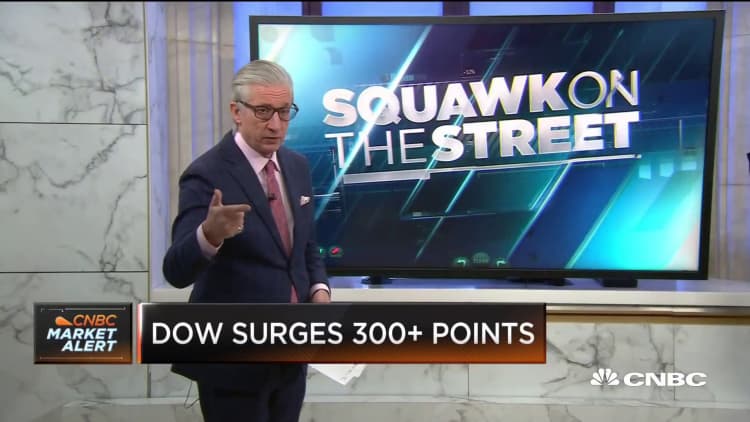
In the last two sessions the Dow has shed 6.59% — its worst two-day performance since Feb. 2018 — but history shows that two day drops of this magnitude are typically a sign that negative sentiment has become too extreme, too quickly.
Looking at performance over the last 30 years, data analytics tool Kensho found that following a drop of more than 6% over two consecutive sessions, 75% of the time the index rallied over the next two weeks, and 88% of the time it rallied over the following month. Outside of the financial crisis, the Dow was higher one month later in every single instance.
On Wednesday the Dow rose more than 400 points at the high before giving back those gains to end the session with a loss of more than 100 points.
Following the steep drop, the Dow on average has gained 2.7% in the subsequent two weeks, and 3.14% over the next month. The data excluded instances where greater-than 6% drops over two sessions occurred within the same month.
In the last two days the Dow has plummeted more than 1,900 points as the number of coronavirus cases outside of China rises, inciting fears among investors that the outbreak could lead to a global economic slowdown.
The recent developments have quickly upended the Street's previously bullish sentiment. The Dow rose to an all-time high on Feb. 12, but is down more than 8% since. The S&P 500 and Nasdaq hit all-time highs on Feb. 19, and are down 7.8% and 8.8%, respectively, since.
The S&P 500 has also posted back-to-back sessions that saw losses of more than 3%, bringing its total decline to 6.28% for its worst two-day performance since Aug. 2015.
CNBC ran the data and found that in the last 20 years the S&P has dropped 3% or more in a single session just 71 times. Two of those instances were Monday and Tuesday.
Of course, past performance is not indicative of future returns, and when drawing parallels between specific moments in the market's history the overall economic backdrop must be factored in.
On Tuesday U.S. health officials said that the coronavirus is "likely" to continue to spread across the U.S., and that the country should "prepare for the expectation that this is going to be bad."
Should the outbreak tip the global economy into a recession, the data could turn out vastly differently this time around.
- CNBC's Nate Rattner and Yun Li contributed reporting.
Subscribe to CNBC PRO for exclusive insights and analysis, and live business day programming from around the world.




